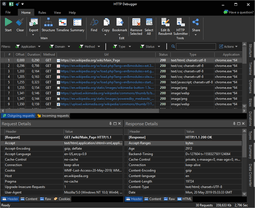HTTP Content
Sending data to server and receiving data from server in HTTP Content
Clients send the data to the server by sending it in HTTP content. It can be your login/password,
a picture that you upload to the server, or a JSON or XML data.
The server sends data to the client also by sending it in HTTP content, for example, the HTML page content or an image.
The HTTP content can be sent only in POST and PUT requests. The GET requests may not have a content part.
HTTP requests and responses that have content must provide Content-Type and Content-Length HTTP headers. Any Content-Length greater than or equal to zero is a valid value. In HTTP, it should be sent whenever the message's length can be determined prior to being transferred unless this is prohibited by the rules. if there are HTTP content in the request/response, then the Content-Length parameter should be present in the header.
The Content-Length entity-header field indicates the size of the entity-body; in decimal number of OCTETs, sent to the recipient or, in the case of the HEAD method, the size of the entity-body that would have been sent had the request been a GET.
Copyright Notice: Please don't copy or translate this article without prior written permission from the HTTPDebugger.com
The HTTP content can be sent only in POST and PUT requests. The GET requests may not have a content part.
HTTP requests and responses that have content must provide Content-Type and Content-Length HTTP headers. Any Content-Length greater than or equal to zero is a valid value. In HTTP, it should be sent whenever the message's length can be determined prior to being transferred unless this is prohibited by the rules. if there are HTTP content in the request/response, then the Content-Length parameter should be present in the header.
The Content-Length entity-header field indicates the size of the entity-body; in decimal number of OCTETs, sent to the recipient or, in the case of the HEAD method, the size of the entity-body that would have been sent had the request been a GET.
Copyright Notice: Please don't copy or translate this article without prior written permission from the HTTPDebugger.com
HTTP Debugger is a proxy-less HTTP analyzer for developers that provides the ability to capture and analyze HTTP headers,
cookies, POST params, HTTP content and CORS headers from any browser or desktop application.
Awesome UI and very easy to use. Not a proxy, no network issues!
Download FREE 7-Day Trial
HTTP Debugger
 Debug HTTP API calls to a back-end and between back-ends.
Very easy to use.
Not a proxy, no network issues!
Download Free Trial
Debug HTTP API calls to a back-end and between back-ends.
Very easy to use.
Not a proxy, no network issues!
Download Free Trial



